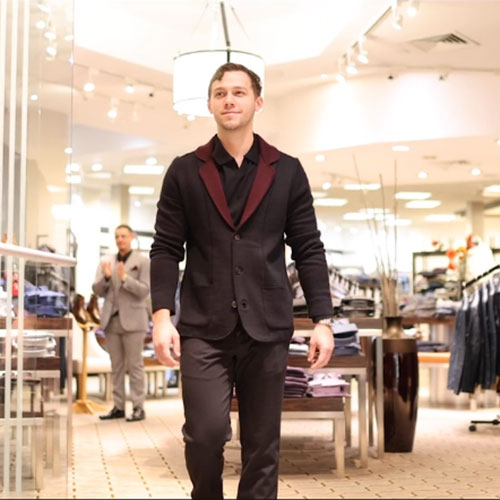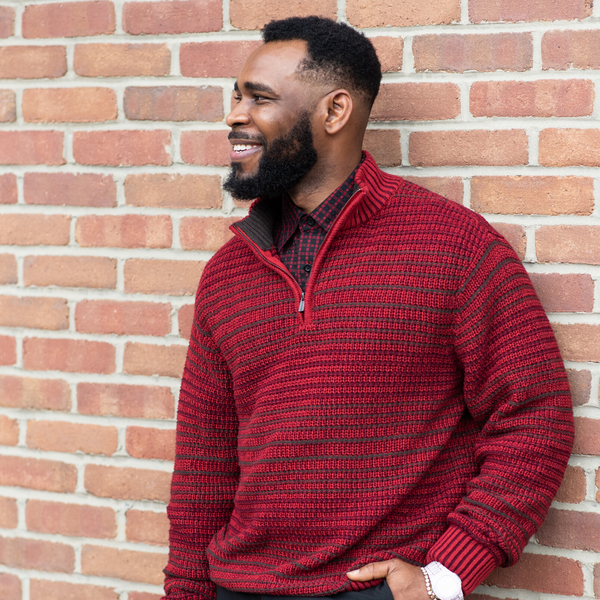Accessorize Appropriately: The Watch
There’s a high probability that watches are the first thing you think of when someone says “men’s accessories,” and for good reason: the watch provides an opportunity to express your personality and to exude “cool” like few other items.
Indeed, a well-worn watch is a power accessory: it can take your whole look up a level (or two).

Yet, there are right and wrong ways to wear a watch. In this week’s blog, we’ll walk you through the what, where, when, and how of completing your look with this influential item.
Leather or Bracelet?
To answer this question, start with one that’s broader: dress or casual? Generally speaking, leather bands are for dressier attire, while metal bracelets are sportier.
Pair a leather strap with anything from a tailored suit to a business-casual outfit. Metal bracelets, on the other hand—while functioning today chiefly as jewelry—are designed to perform, and thus generally pair better with sport shirts, polos, and other more casual garments.

Keep in mind, though: these aren’t hard-and-fast rules! There are elegant metal bracelet (sport) watches out there that can pull a suit together perfectly.
Similarly, leather straps can work to elevate a more casual look if paired with appropriate shoes, belt, and overall fit. Try a brown leather band with a crisp t-shirt, dark jeans, and upscale casual sneakers. Don’t try one with flip-flops and workout gear.

The Face: Simplicity vs. Functionality
Just like leather straps and metal bracelets represent different but-somewhat-overlapping sections of a Venn diagram, so do the concepts of simplicity and complexity.
A “complication” is actually the technical term for the extras on the face of your watch that do more than tell time (such as a chronograph or date display), and more of them make a watch appear more—you guessed it—complicated. Some guys may say “interesting.”

These added features tend to be found more often on tool or sport watches, and add can make a watch more interesting and technical. As such, more complications work better with sportier or more casual attire, though you shouldn’t be afraid to feature a somewhat elaborate statement piece watch in a business or business-casual environment.
When it comes to dressier, more upscale occasions—say, a formal wedding—simplicity is most definitely the move. Your formalwear will be complemented by a simpler, elegant face (white or black), while a watch face that looks like a science experiment may clash with the clean lines of your bespoke suit.

The Face: Size
In assessing the appropriate size of a watch face, context is once again key. If your wrist/forearms are on the small side, the small-to-medium faces typically found on field-style (think Hamilton Khaki, Timex Weekender, or Rolex Explorer 1) and many dress watches (think IWC Portofino, Orient Bambino, or even a Rolex Datejust) will complement your frame, while a larger face (such as those on many pilot-style or dive watches) will appear overwhelming.

The opposite is also true: a too-small face will look awkward on a man with larger wrists and forearms. Instead, try a Diver or Pilot-style watch (like an IWC Big Pilot or Omega Seamaster Pro), which tend to feature broader, more impactful faces.
Regardless of your wrist and forearms size, be aware of your sleeve situation: a too-large watch face can impede and wrinkly a shirt sleeve (and event a suit sleeve), resulting in an ungainly and inelegant look.
Ideally, your sleeve cuff should just cover a fraction of the watch, without completely concealing it. When shopping for a watch, we recommend wearing the style of shirt or jacket you plan to wear most with it in order to best gauge size and fit.

Quick Tips for a Watch Well-Worn:
- Don’t wear the same watch every day. We recommend rotating pieces to add some more variability and personality to your wardrobe. Ticknors’ style advisors can help you decide which of your timepieces work best for different situations and outfits.
- Keep color matching in mind. If you’re going with a leather band, it should match your shoes and belt (i.e. brown with brown, black with black). However, if you’re rocking a watch with, say, a black face and brown band, you’ve got some more room to maneuver for less formal occasions.
- Smartwatches can serve as a stylish and functional tool and even lend a future-forward aura to your look, but the band should be appropriate for the situation: rubber might be fine for the golf course, but not for the boardroom. And for the most formal occasions- keep it analog.
- Ditch the over-the-top diamonds and embellishments. Subtle jewelling can certainly work well, but don’t go overboard with an ostentatious display. A great watch is a statement, not a cry for attention.
Want to take your style game to the next level? Book an appointment with one of our style advisors for trusted advice as to how best complement your individual style with the ideal timepiece.



